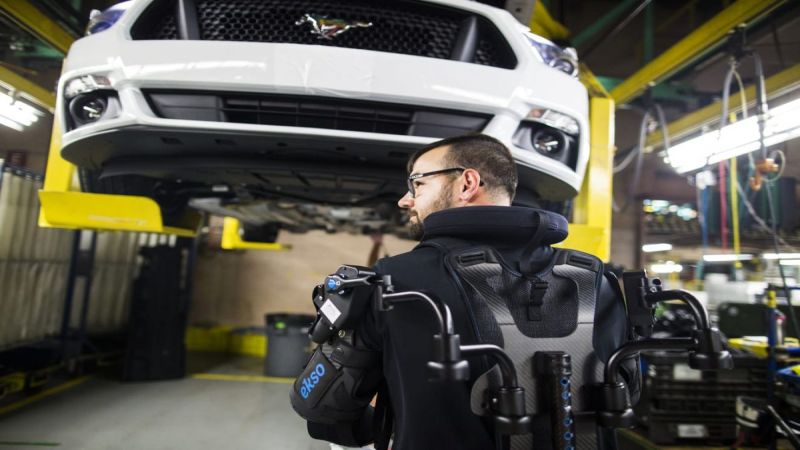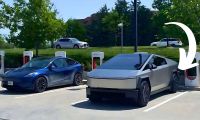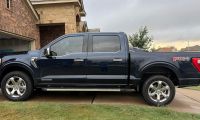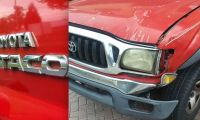The man working on this 2019 Ford Mustang at the Flat Rock Assembly plant, in Michigan may look like he is part man, part machine, but he isn’t a cyborg. He is wearing what is called an EksoVest. Ford is pioneering this advanced technology to help employees do strenuous, repetitive jobs. The EksoVest helps prevent worker injuries.
Ford has been testing the exoskeleton, of sorts, in both the Flat Rock plant and at Michigan Assembly. The EksoVests have worked so well that Ford is now deploying the vests in 15 plants around the world. Ford was able to use what it learned during the experimental phase to refine the EksoVest technology.
The exoskeletal technology will be available to workers who have to perform repetitive overhead tasks. Many employees have to lift parts over their heads as many as 4,600 times a day. The EksoVest will assist the workers, helping them avoid fatigue and potential injury.
“I don’t want the EksoVest to ever leave,” said Nick Gotts, an original EksoVest operator at Flat Rock Assembly, “Any job that’s overhead, I wouldn’t work without it.”
How the Vest Helps the Workers
Ford partnered with Ekso Bionics to design this wearable technology. The vest elevates and supports a worker’s arms while performing overhead tasks such as reaching up with a power tool to screw bolts to secure the car’s brace. Workers have to stand underneath the vehicle on the assembly line to screw in the bolts.
The technology helps Ford reduce injuries to workers and also improves morale, making the jobs more pleasant. Plus, it fits just about everyone. The EksoVest fits people ranging from 5 feet 2 inches tall to 6 feet 4 inches tall and can lift from five pounds to 15 pounds per arm. Workers say it’s comfortable because it’s lightweight and not bulky, allowing them to move their arms easily.
“Building vehicles is physically a tough job,” said Bruce Hettle, Ford group vice president, Manufacturing and Labor Affairs. “We care about our employees and are trying to help them do their jobs with the least amount of wear and tear on their bodies possible.”
The EksoVest technology will ultimately help Ford build better vehicles. Workers should be able to complete their tasks without becoming overly tired or in pain. No one is suggesting that anyone would do less than their best, but over time, repetitive injuries could easily affect quality.
Ekso Bionics’ Medical Mission
Ekso Bionics started as a medical technology company, building exoskeletons and other wearable technology to help people with physical disabilities. They have exoskeletons that can help people with paralysis to stand up and walk. The company has expanded to design some of the most cutting-edge, innovative wearable robots available on the market.
“At Ekso, our mission is to augment human capability with wearable technology and robotics that help people rethink current physical limitations and achieve the remarkable,” said Jack Peurach, president and chief executive officer of Ekso Bionics. “Advancing our collaboration with a global leader like Ford, represents a major step forward in achieving our mission as our EksoVest is deployed around the world to enhance the well-being of its work force.”
Ford will have EksoVests available at all of its North American plants, and they are also being used in Asia Pacific, Europe and South America.
For more information about injuries to workers, you can log onto the Occupational Safety and Health Administration here.












